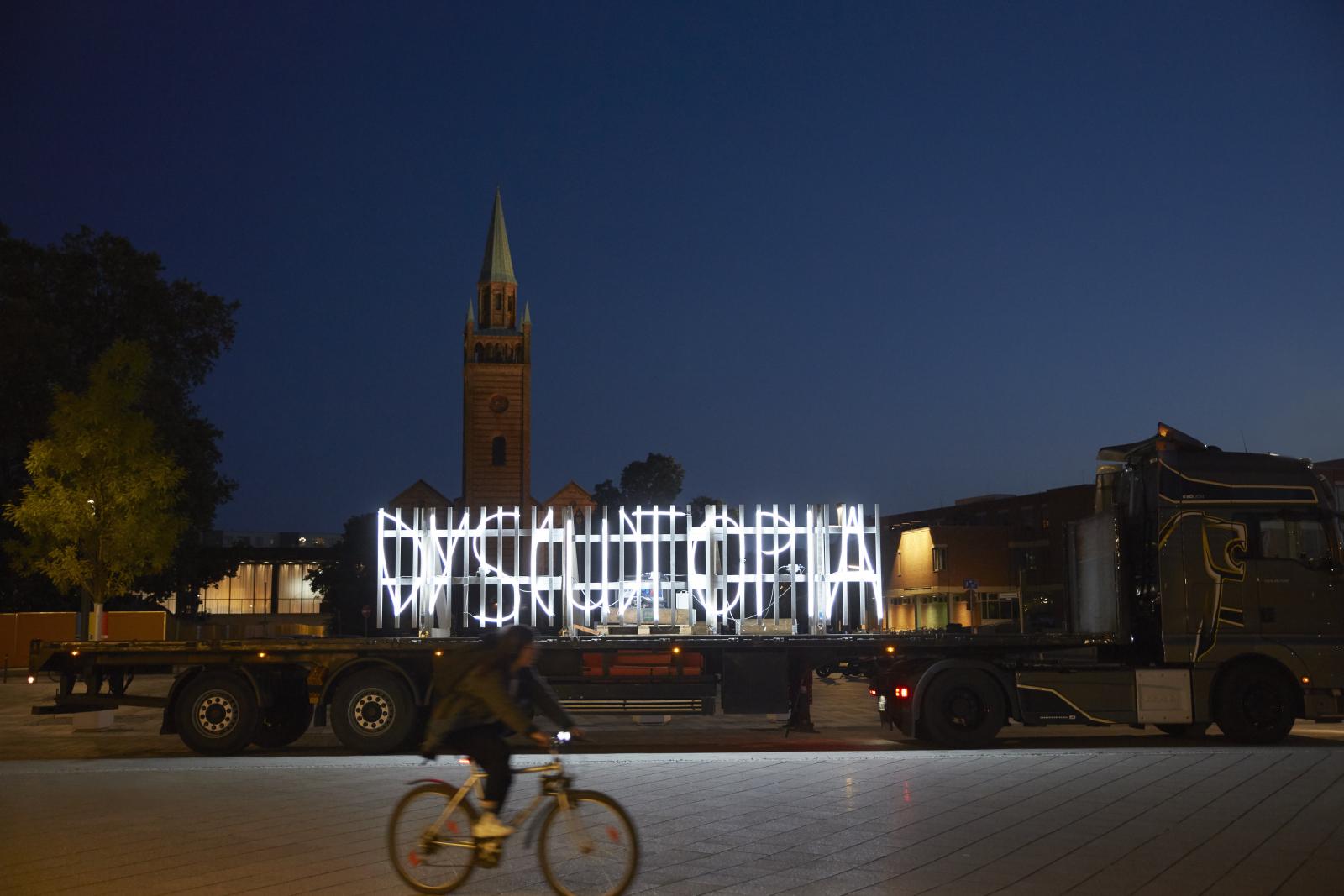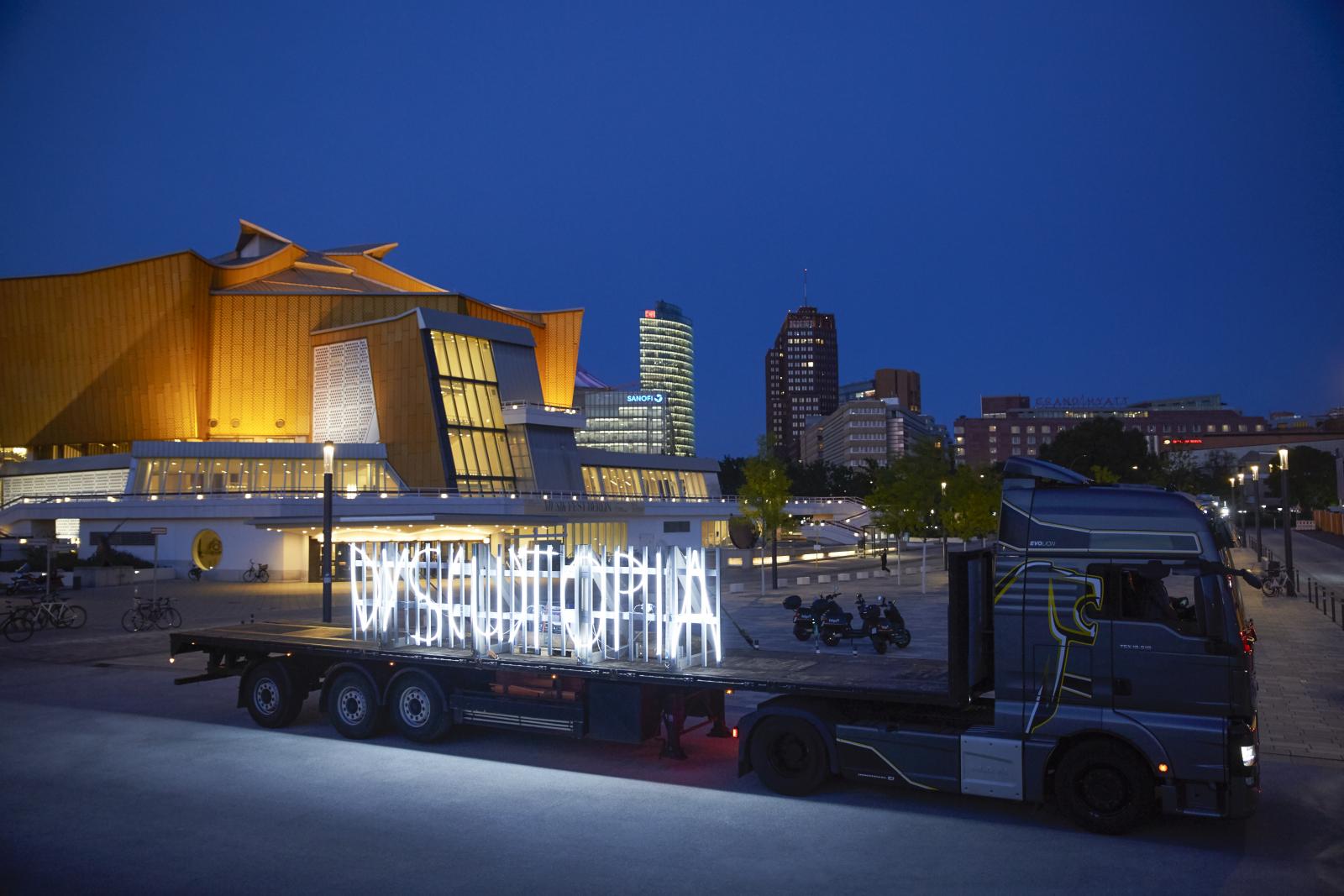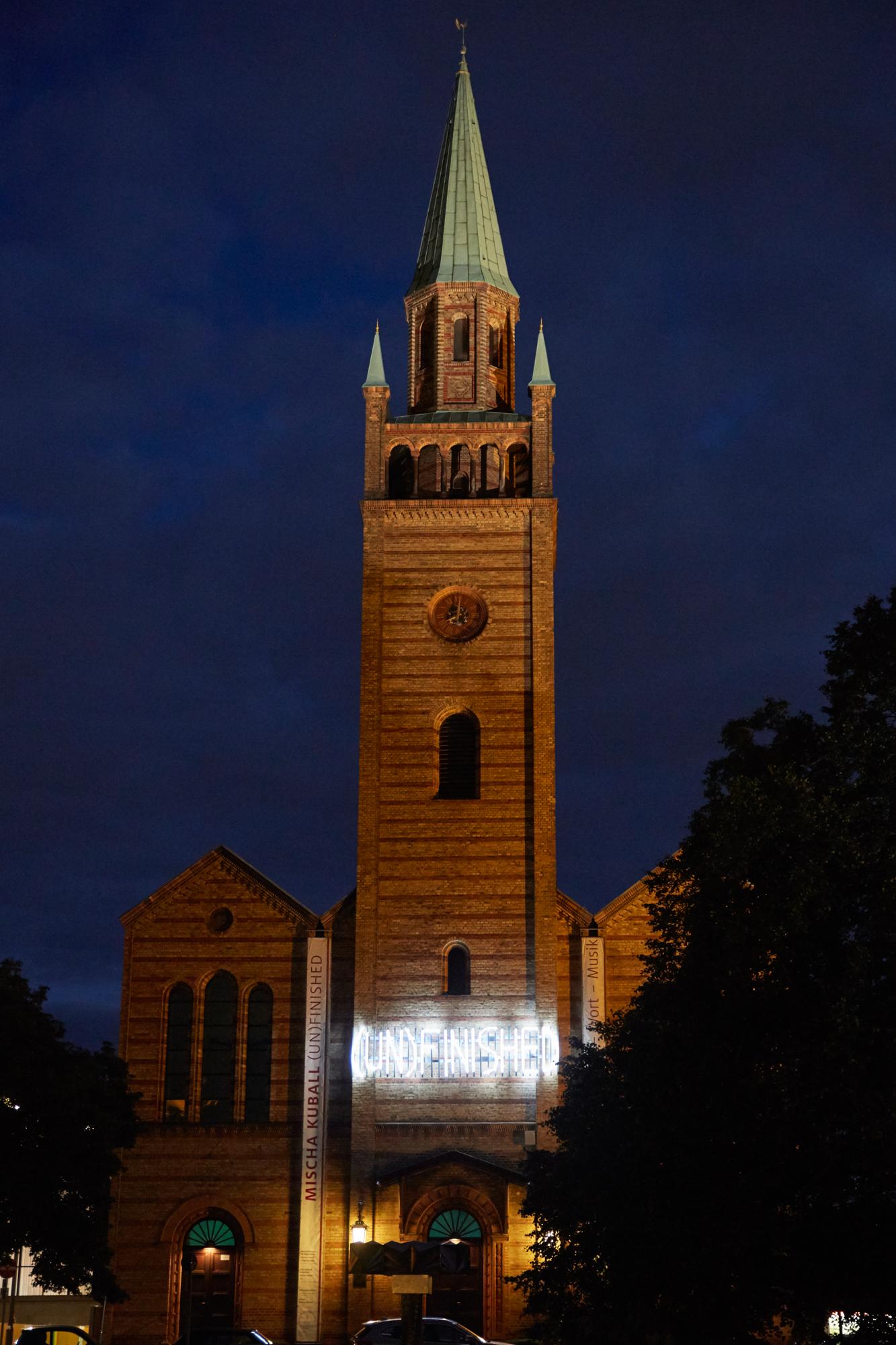(UN)FINISHED




At the end of the Berlin Art Week, the Düsseldorf artist Mischa Kuball makes a statement in Berlin’s St. Matthäus Church as part of the cross-cultural forum project “Utopia Kulturforum”: While there is talk of the structural “finishing” of the Kulturforum with a view to the construction of the Museum of the 20th Century right next to the church, Mischa Kuball is promoting the creative potential of “unfinishing”. The opening of the side specific installation (un)finished will take place on 19 September 2021, the last day of Berlin Art Week.
The Berlin Kulturforum is a place of longing. Long reviled as an urban planning “non-place”, it also encompasses one of Berlin’s most promising cultural constellations, which is currently developing new dynamics with the construction of the “Museum of the 20th Century”. In the middle of it all is St. Matthew’s Church, the oldest building on the site, which towers into the sky like a reminder of the complex development of the area.
The “non-place” has always inspired projections: What could a successful interplay between the neighbouring institutions look like? How could the relationship between art, religion and society be understood and redeveloped in this place? The non-place, Greek “ou-topos”, opens the space for projections. As part of the cross-cultural forum project “Utopia Kulturforum”, Mischa Kuball opens up the church space of St. Matthew’s Church – and the view of the Kulturforum. While there is talk of the structural “completion” of the Kulturforum with a view to the construction of the “Museum of the 20th Century” right next to the church, Mischa Kuball promotes “incompletion” in the sense of the driving forces of art and religion. Both live from an open horizon beyond the visible shape of our present.
Mischa Kuball on this: “‘Utopianism necessarily ends in disappointment’, said the cultural theologian Paul Tillich (1886-1965), who was introduced to the parish ministry at St. Matthew. (UN)FINISHED invokes this possibility as likely. Above the entrance portal of St. Matthew’s, the luminous signé becomes a cautionary mantra to distrust built ‘final solutions’ especially in a place like the Kulturforum!”
Hannes Langbein is pastor at St. Matthäus and director of the St. Matthäus Foundation, the art and culture foundation of the Evangelical Church Berlin-Brandenburg-schlesische Oberlausitz. The foundation was established in 1999/2000 and serves the mission of leading and promoting the dialogue of the church with the arts. Through its own projects and in co-operations, the foundation promotes the church’s sustained dialogue with artists. Hannes Langbein is also editor of the magazine “kunst und kirche” and president of the society for contemporary art and the church “Artheon”.
Hannes Langbein on the development of the old Tiergarten quarter and its turbulent history:
“(UN)FINISHED” is written in bright letters above the main portal of St. Matthäus Church – in a constant change of light between “(UN)” and “FINISHED”. Within sight is the large construction site of the “Museum of the 20th Century” currently under construction, which advertises the prospect of “completing” the Kulturforum. The Düsseldorf artist Mischa Kuball is sceptical about the longing for completion. For the arts, like the city, live from the dynamic of the incomplete, which enables development processes and open horizons. Even the oldest building of the Kulturforum, St. Matthew’s Church, has to deal with the incompleteness of its task. Accordingly, a luminous “(u)” hovers above the altar of St. Matthäus Church – signé for “unfinished”, but also for “utopia”, cipher for humanity’s collected longings for a better world and a longed-for state of completion.
The cultural theologian Paul Tillich, who was ordained at St. Matthew’s in 1912, already pointed out in the 1920s that all “utopian” attempts to achieve a worldly state of perfection must necessarily fail because they ignore the finitude of human beings. The “kingdom of God”, the proverbial heaven on earth, can only assert itself or come about by itself and lives from the constant questioning of human possibilities. The bracketed “u” (= Greek “not”) above the altar of the church also announces this.
How close utopia and dystopia are in the face of human longings for perfection can be seen on the floor of the church: There, the history of the Kulturforum and the old Tiergarten district can be read on a multi-layered city map: Like a palimpsest, the street network of the old Tiergarten quarter (until 1938) lies under Albert Speer’s plans for a world capital “Germania” (1938), which almost razed the old Tiergarten quarter to the ground before the war. St. Matthäus Church – a section of which can be found in the centre of the city map – was also to have been demolished in favour of the National Socialist army administration planned for the site. Instead, the war left the neighbourhood as a landscape of ruins and a “tabula rasa” into which today’s Kulturforum was planned (from 1960). In Mischa Kuball’s “City Map”, all three layers lie on top of each other.
The present shifts into the picture by means of moving video projections: the city map becomes a projection surface for moving scenes from the past and the present: pictures from the old Tiergarten quarter, model views of Albert Speer’s Germania, actions by Mischa Kuball in the Kulturforum from different times: a flock of sheep grazing in the Kulturforum from 2005, which reminds us of the agricultural use of the area in the first half of the 19th century, the mobile light sign “DYS(U)TOPIA”, which Mischa Kuball had driven through Berlin on an articulated lorry in August 2021.
DYS(U)TOPIA”… – The images that glide across the church floor like moving spots, address and dislocate the viewers – in interaction with sound snippets wandering through the space – in the field of tension between history and the present."

